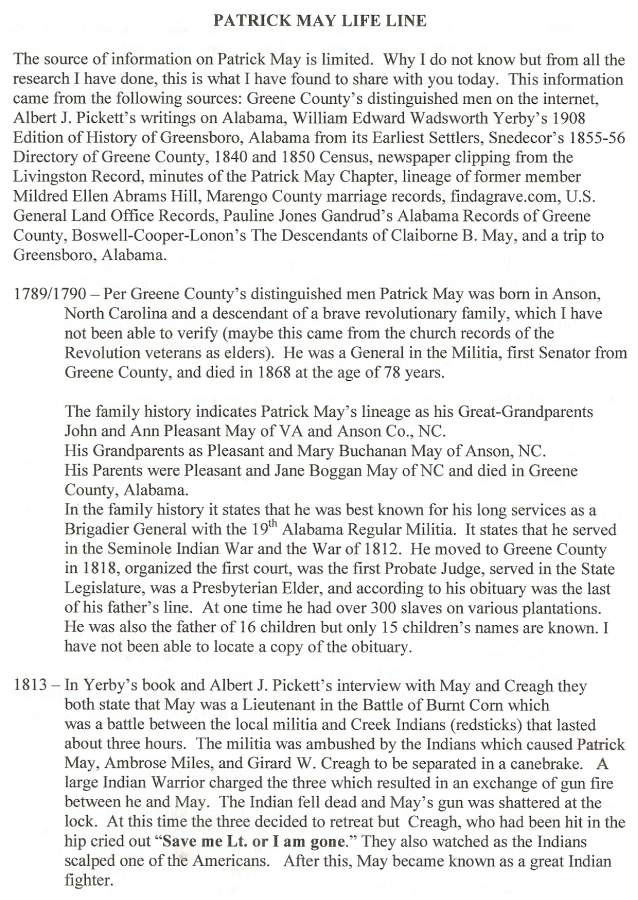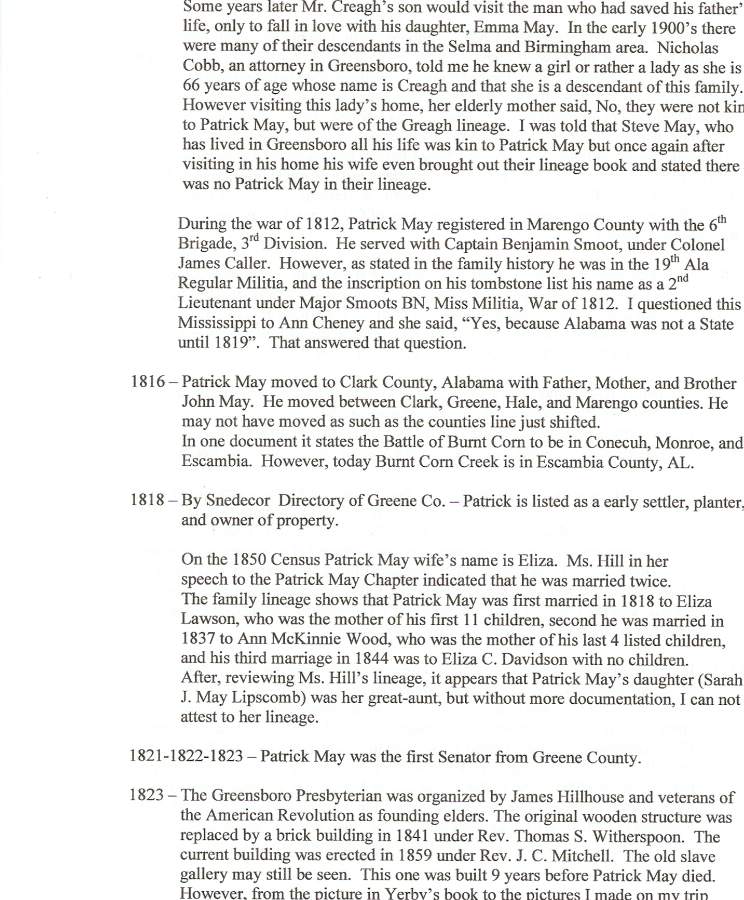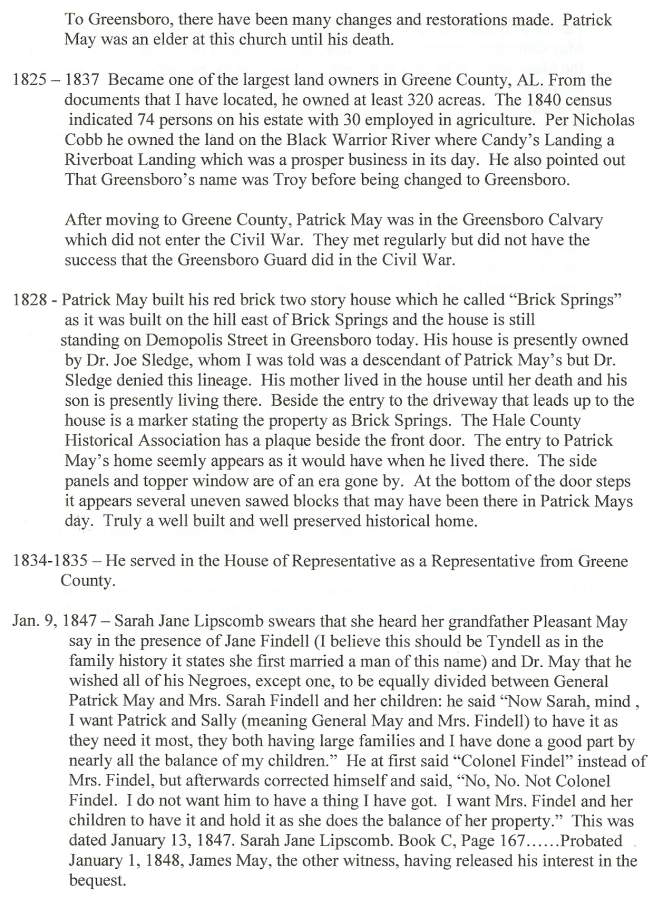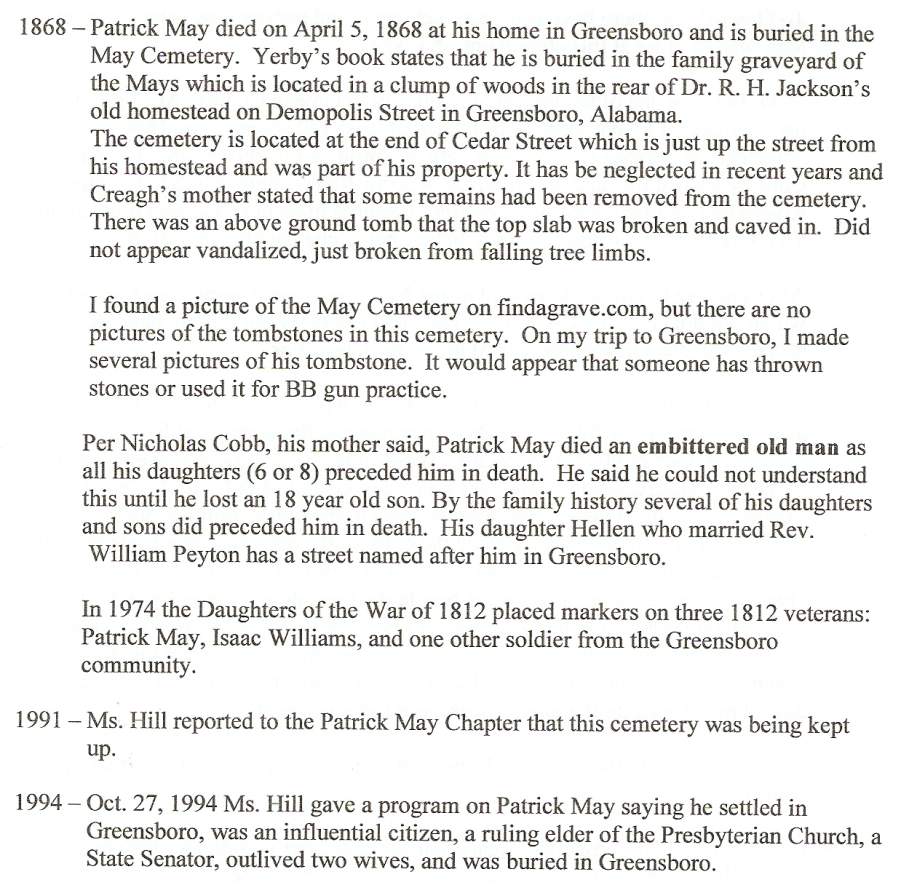 |
||
|---|---|---|
|
ANDREW JACKSON INDIAN REMOVAL POLICY Last Battle War Alabama
|
BIOGRAPHIES OF SOME OF THOSE WHO FOUGHT IN THE WAR OF 1812, ALSO KNOWN AS THE FIRST CREEK WAR IN ALABAMA, MISSISSIPPI, GEORGIA AND LOUISIANA SAMUEL DALE AND FAMOUS CANOE FIGHT The legendary confrontation that became known as the "Canoe Fight" took place on November 12, 1813, on the Alabama River during the Creek War of 1813-14.The skirmish gained fame for the novelty of having taken place in canoes, pitting a small band of militia, led by Captain Samuel Dale, against a larger group of Red Stick Creeks. Following the Fort Mims Massacre in August 1813, small bands of Creek warriors continued to attack settlements in the Mississippi Territory in present-day lower Alabama.. That November, Captain Samuel Dale who was stationed at Fort Madison in present-day Clarke County The .Canoe Fight which took place when Dale volunteered to lead a mission to drive the Indians away to bring stability to the area. Striking out with 30 Mississippi territorial volunteers and 40 militiamen from the area, Dale and his men soon encountered a large party of Red Stick warriors near the mouth of Randon's Creek on the Alabama River. The ensuing confrontation, observed from both sides of the river by a number of soldiers, was retold in several slightly differing accounts, but the core facts are fairly consistent. Captain Dale and 11 of his men, including Jeremiah Austill and James Smith, had become separated from the main force. Their late morning breakfast on November 12, 1813, was interrupted with a cry that Indians were in the vicinity. When Dale and his small party reached the riverbank, they saw a canoe containing a reputed chief and 10 warriors coming down the river. As the canoe approached the bank, its occupants saw Dale's men and reversed their canoe back into the river. Two warriors then jumped from the canoe into the water, and one was shot by Smith. Dale ordered a large canoe to be brought over from the other side of the river to aid in attacking these Indians. Eight men began to carry out this order but got cold feet when they saw the number of warriors in the canoe and returned to their side of the river. Dale was irritated at the unwillingness of these men to join the fight, but was determined to engage the Indians. He thus ordered a free African American, known only as Caesar, to paddle a small dugout canoe, which would only hold himself, Jeremiah Austill, and JamesSmith, out to meet the Creek canoe now bearing nine warriors. As Caesar paddled the canoe toward their target, Dale, Austill, and Smith attempted to fire upon the Indians. Only one weapon fired, however, as the priming of the other two had been dampened by the water from the river. When the canoes were about to meet prow to prow, the chief recognized Dale and shouted in English, "Now for it, Big Sam." The opposing canoes met side-to-side, and the chief knocked Austill down with his rifle. Dale then ordered Caesar to hold the canoes together and after a few minutes of hand-to-hand fighting using rifles and oars as clubs, the white soldiers, although outnumbered three to one, killed all of the Indians remaining in the canoe. According to witnesses, Dale's men cheered as the bodies of the dead warriors were cast into the river. Samuel Dale's leading role in the Canoe Fight attained him hero status, making him as legendary to early Alabamians as Daniel Boone and Davy Crockett were to Kentuckians and Tennesseans, respectively. Dale went on to serve as a delegate in the convention that divided the MississippiTerritoryinto Alabama and Mississippi, represented Monroe Countyfor several years in the Alabama General Assembly, and was conferred the rank of brigadier general in the Alabama militia. He later moved to Lauderdale County in Mississippi, where he died in 1841. After the Creek War, Jeremiah Austill clerked in his uncle's store in St. Stephens, served as Clerk of theMobile CountyCourt, represented Mobile in the state legislature, commenced a business as a commission merchant, and ran a plantation the Tombigbee River. Austill lived and worked for many years on his plantation where he died in 1879 at the age of 86. Very little is known about James Smith other than he was a native of Georgia and took part in several frontier expeditions that involved skirmishes with Indians during the Creek War. Smith moved to Mississippi after the war where he lived until his death. Pickett, Albert James. History of Alabama and Incidentally of Georgia and Mississippi From the Earliest Period. 1851. Reprint, Birmingham, Ala.: Birmingham Book and Magazine Co., 1962. Herbert J. "Jim" Lewis GENERAL JOHN FLOYDGeneral John Floyd was induced by Gen. Jas. Jackson, one of the distinguished Governors of Georgia, to enter public life in 1803, or 04, as a member of the State Legislature. In 1806, he was appointed Brigadier General of the 1st Brigade Georgia Militia; and from the high opinion entertained of his military character and patriotism, the Governor of the State, in the autumn of 1813, selected him to command the Georgia troops against the Creek Indians.In September 1813, Floyd assembled 3,600 Georgia troops at Fort Hawkins.Thomas H. Davis Diary account: CAMP DEFIANCE - Jan 27, 1814 The General did not quite the army in consequence of his wound, but having partially recovered after much suffering advanced again from Fort Mitchell, in January, 1814, and was attacked before day light on the 27th of that month at Camp Defiance, by the enemy in great force, headed by the famous warrior Weatherford, and aided by Colonel Woodbine, an English officer who boasted afterwards of having planned the attack. GENERAL PATRICK MAYS
|
|



